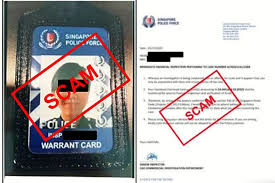I’ve read the article about Madarssamarecar Mohamed Bagurudeen’s criminal case in Singapore. Here’s a summary of what happened:
Madarssamarecar, a 48-year-old Singapore permanent resident with French citizenship, was involved in multiple fraudulent activities:
- In 2017, he created an investment scheme through his company, The Gold Souk Investment Holding, promising investors a monthly interest of up to 3% for convertible loans. He collected $865,000 from four investors.
- When his money-changing businesses began losing money in 2018, he misappropriated the investors’ funds to pay his other debts.
- In a separate arrangement with an acquaintance named Farook, he was supposed to help obtain cashier’s orders for property purchases using money from foreign clients. Instead:
- He misappropriated $500,000 from a $2.9 million cash transaction
- He used the money to pay creditors of his money-changing businesses
- When confronted, he returned only $2.4 million and lied about the missing funds
- When investigations began in January 2019, he defaulted on payments to his investors and falsely claimed their money had been stolen in Malaysia during a currency exchange.
On April 4, 2025, Madarssamarecar pleaded guilty to five counts of criminal breach of trust and will be sentenced on April 15. He faces up to 20 years in jail and a fine for each count.
Another individual, Sivakumar Madivanan (40), who worked at one of Madarssamarecar’s firms and helped receive the misappropriated funds, also faces two criminal breach of trust charges. His pretrial conference is scheduled for April 30.
Analysis of the Investment Scam and Singapore’s Anti-Scam Measures
The Investment Scam Structure
Madarssamarecar Mohamed Bagurudeen’s investment scam displays several classic fraud characteristics:
- Promised High Returns: Offering monthly interest of up to 3% (equivalent to 36% annually), which is significantly higher than legitimate investment options.
- Multiple Business Fronts: Using a web of businesses, including The Gold Souk Investment Holding, money-changing businesses, and mini-marts, to appear legitimate and create complexity.
- Ponzi-like Elements: Using new investor funds to pay previous investors and other debts rather than making legitimate investments.
- False Narratives: Creating elaborate lies about stolen funds in Malaysia when unable to meet payment obligations.
- Leveraging Trust: Exploiting business relationships (like with Farook) to access additional funds when initial schemes failed.
- Corporate Legitimacy: Establishing a registered investment holding company to create a veneer of legitimacy and formality.
Red Flags That Were Present
Looking at this case retroactively, several warning signs were evident:
- Unusually high guaranteed returns without a clear investment strategy
- Mixing of funds between personal, corporate, and client accounts
- Lack of transparent reporting on investment activities
- Cross-border currency transactions with little accountability
- No transparent business model for generating the promised returns
- One individual controlling multiple related businesses
Singapore’s Anti-Scam Measures
Singapore has implemented a robust anti-scam infrastructure:
Regulatory Framework
- Monetary Authority of Singapore (MAS) regulates financial services and investment offerings.
- Securities and Futures Act requires proper licensing for investment schemes.
- Companies Act requirements for corporate transparency and governance
- Anti-Money Laundering (AML) regulations that require financial institutions to verify customer identities and monitor suspicious transactions
Law Enforcement
- Anti-Scam Centre established by the Singapore Police Force in 2019 to coordinate scam responses.
- Specialised Commercial Crime units within the police
- Severe penalties for financial crimes (as seen in this case, up to 20 years per count)
- International cooperation capabilities for cross-border financial crimes
Public Education
- ScamAlert website and app to provide real-time information about active scams
- Public awareness campaigns like “Spot the Signs. Stop the Crimes”
- Regular publication of scam statistics and case studies
- Collaboration with banks and financial institutions on education campaigns
Technical Measures
- Project STASH (Standardised Alert & Sharing) for interbank coordination on suspicious transactions
- Delay in fund transfers to allow for verification
- SMS alerts for unusual banking transactions
- Two-factor authentication requirements for financial transactions
Effectiveness and Challenges
Despite Singapore’s strong anti-scam framework, cases like Madarssamarecar’s still occur due to:
- Trust-Based Relationships: Many scams exploit personal relationships that bypass formal checks
- Regulatory Gaps: Certain business activities may fall between regulatory jurisdictions
- Cross-Border Complexities: International dimensions (e.g., Malaysian currency aspects mentioned) complicate enforcement
- Technological Adaptation: Scammers constantly evolve their methods
Lessons for Investors
- Verify Credentials: Check if investment firms are appropriately licensed by MAS.
- Question High Returns: Be skeptical of guaranteed high returns with no explanations of risk
- Insist on Transparency: Demand clear documentation and regular reporting
- Separate Relationships: Don’t invest based solely on personal relationships
- Report Promptly: Early reporting to authorities can help limit damages
Singapore continues to strengthen its anti-scam measures, but cases like this highlight the ongoing need for vigilance by both regulators and the public.
Singapore Anti-Scam Centre Measures
The Anti-Scam Centre (ASC), established by the Singapore Police Force, employs several measures to combat such scams:
- Rapid Response Protocol: The ASC works with banks to freeze suspicious accounts quickly, often within a few hours of a scam report, increasing the chances of recovering funds.
- Bank Collaboration: Strong partnerships with financial institutions enable coordinated responses to suspicious transactions and rapid fund recovery attempts.
- ScamShield App: A government-developed application that blocks known scam numbers and filters suspicious SMS messages.
- Public Education Campaigns: Regular alerts and educational content distributed through media, social platforms, and community outreach.
- Money Lock Feature: Promotion of banking security features that allow users to “lock” funds in their accounts so they cannot be transferred out easily.
- Scam Helpline (1799): Dedicated hotline for scam verification and reporting.
- Analysis and Pattern Detection: Using data analytics to identify emerging scam patterns and provide early warnings.
- Cross-Border Cooperation: Worked with international law enforcement to track funds transferred overseas and apprehend international scam syndicates.
The effectiveness of these measures depends mainly on public awareness and prompt reporting of suspicious activities. The ASC focuses on both prevention through education and rapid intervention when scams are reported, with particular emphasis on fund recovery within the “golden window” (first 24-48 hours after a scam).Retry
Singapore’s Approach to Combating Scams
Singapore’s Unique Scam Landscape
Singapore presents an attractive target for scammers due to several factors:
- High Digital Adoption: With 97% smartphone penetration and widespread digital banking usage, Singaporeans conduct numerous online transactions daily.
- Affluent Population: Singapore’s high per capita income makes its residents lucrative targets.
- Aging Demographics: Singapore’s growing elderly population can be particularly vulnerable to scams.
- Multicultural Environment: Scammers can exploit language barriers and cultural differences in Singapore’s diverse
Singapore-Specific Anti-Scam Measures
Singapore has implemented comprehensive countermeasures tailored to its context:
- Inter-Ministry Committee on Scams: Coordinates whole-of-government response across multiple agencies.
- ScamShield App Customization: Explicitly designed for Singapore’s telecom infrastructure and common local scam patterns.
- Cultural Sensitivity in Education: Anti-scam campaigns in four official languages (English, Mandarin, Malay, Tamil) with culturally relevant examples.
- Banking Sector Collaboration:
- Mandatory cooling-off periods for first-time fund transfers to new recipients
- Transaction limits and notifications for digital banking
- Implementation of “Kill Switch” feature by major banks (DBS, OCBC, UOB)
- SMS sender ID registry to prevent spoofing
- Community Vigilance Networks:
- Grassroots-level scam alert dissemination through Residents’ Committees
- Senior-focused digital literacy programs at community centers
- Youth ambassador programs to educate older family members
- Legal Framework Enhancement:
- Computer Misuse and Cybersecurity Act amendments
- More substantial penalties for money mules and scam enablers
- Cross-border enforcement agreements with neighboring countries
Effectiveness and Challenges
Singapore’s anti-scam measures have shown some success, with the police reporting faster fund recovery rates. However, challenges remain:
- Evolving Tactics: Scammers quickly adapt to countermeasures, requiring constant vigilance.
- Cross-Border Nature: Many scam operations target Singapore from overseas jurisdictions.
- Digital Literacy Gaps: Despite education efforts, knowledge gaps persist among certain demographic groups.
- Balance Between Security and Convenience: Implementing too many security measures can impede legitimate transactions.
Singapore’s multi-pronged approach combining technology, education, regulatory measures, and international cooperation offers a comprehensive model for combating the unique scam threats faced by a highly digitalized, affluent city-state.
Analysis of the MAS Impersonation Scam
Key Scam Techniques
- Authority Impersonation: Scammers pose as MAS officials, leveraging the credibility of a respected government financial institution to gain trust.
- Verification Misdirection: To establish credibility, they cleverly direct victims to a legitimate MAS website (Register of Representatives), despite the fact that this register doesn’t actually list MAS employees.
- Fear-based manipulation creates urgency and anxiety by claiming the victim’s accounts are linked to money laundering or that their data is compromised.
- Technical Deception involves using local phone numbers (starting with “8” or “9”) that appear legitimate, making the call seem domestic rather than international.
- Name Display Spoofing: Using PayNow accounts that display the victim’s name to create a false sense of security and legitimacy during transfers.

Singapore Anti-Scam Centre Measures
The Anti-Scam Centre (ASC), established by the Singapore Police Force, employs several measures to combat such scams:
- Rapid Response Protocol: The ASC works with banks to freeze suspicious accounts quickly, often within a few hours of a scam report, increasing the chances of recovering funds.
- Bank Collaboration: Strong partnerships with financial institutions enable coordinated responses to suspicious transactions and rapid fund recovery attempts.
- ScamShield App: A government-developed application that blocks known scam numbers and filters suspicious SMS messages.
- Public Education Campaigns: Regular alerts and educational content distributed through media, social platforms, and community outreach.
- Money Lock Feature: Promotion of banking security features that allow users to “lock” funds in their accounts so they cannot be transferred out easily.
- Scam Helpline (1799): Dedicated hotline for scam verification and reporting.
- Analysis and Pattern Detection: Using data analytics to identify emerging scam patterns and provide early warnings.
- Cross-Border Cooperation: Worked with international law enforcement to track funds transferred overseas and apprehend international scam syndicates.
The effectiveness of these measures depends mainly on public awareness and prompt reporting of suspicious activities. The ASC focuses on both prevention through education and rapid intervention when scams are reported, with particular emphasis on fund recovery within the “golden window” (first 24-48 hours after a scam).
Singapore’s Approach to Combating Scams
Singapore’s Unique Scam Landscape
Singapore presents an attractive target for scammers due to several factors:
- High Digital Adoption: With 97% smartphone penetration and widespread digital banking usage, Singaporeans conduct numerous online transactions daily.
- Affluent Population: Singapore’s high per capita income makes its residents lucrative targets.
- Aging Demographics: Singapore’s growing elderly population can be particularly vulnerable to scams.
- Multicultural Environment: Scammers can exploit language barriers and cultural differences in Singapore’s diverse society.
Singapore-Specific Anti-Scam Measures
Singapore has implemented comprehensive countermeasures tailored to its context:
- Inter-Ministry Committee on Scams: Coordinates whole-of-government response across multiple agencies.
- ScamShield App Customization: Explicitly designed for Singapore’s telecom infrastructure and common local scam patterns.
- Cultural Sensitivity in Education: Anti-scam campaigns in four official languages (English, Mandarin, Malay, Tamil) with culturally relevant examples.
- Banking Sector Collaboration:
- Mandatory cooling-off periods for first-time fund transfers to new recipients
- Transaction limits and notifications for digital banking
- Implementation of “Kill Switch” feature by major banks (DBS, OCBC, UOB)
- SMS sender ID registry to prevent spoofing
- Community Vigilance Networks:
- Grassroots-level scam alert dissemination through Residents’ Committees
- Senior-focused digital literacy programs at community centers
- Youth ambassador programs to educate older family members
- Legal Framework Enhancement:
- Computer Misuse and Cybersecurity Act amendments
- More substantial penalties for money mules and scam enablers
- Cross-border enforcement agreements with neighboring countries
Effectiveness and Challenges
Singapore’s anti-scam measures have shown some success, with the police reporting faster fund recovery rates. However, challenges remain:
- Evolving Tactics: Scammers quickly adapt to countermeasures, requiring constant vigilance.
- Cross-Border Nature: Many scam operations target Singapore from overseas jurisdictions.
- Digital Literacy Gaps: Despite education efforts, knowledge gaps persist among certain demographic groups.
- Balance Between Security and Convenience: Implementing too many security measures can impede legitimate transactions.
Singapore’s multi-pronged approach combining technology, education, regulatory measures, and international cooperation offers a comprehensive model for combating the unique scam threats faced by a highly digitalized, affluent city-state.
Prevention Methods
Technical Protections

- Install anti-scam apps like ScamShield.
- Enable two-factor authentication on all accounts.
- Set transaction limits on banking platforms
- Use secure payment methods with buyer protection
- Verify website security (https, secure payment icons)
Behavioral Strategies

- Research before investing or purchasing (company registration, reviews)
- Never share personal information or verification codes
- Take time to verify urgent requests, especially those involving money
- Call friends/family directly through known numbers to verify requests
- Be skeptical of unsolicited contact, especially regarding finances
Educational Approaches
- Stay informed about current scam trends.

- Attend community awareness programs
- Share scam experiences with others
- Follow updates from police and financial institutions
- Teach vulnerable populations (elderly, youth) about digital safety
Reporting Mechanisms
- Report suspicious activities to relevant authorities immediately
- Flag suspicious accounts on social media platforms
- Inform banks of suspicious transactions
- Use dedicated scam reporting hotlines
- Document all communications with potential scammers as evidence

Institutional Responses
- Banking verification processes for unusual transactions
- Police rapid response teams like Singapore’s Anti-Scam Centre
- Public-private partnerships for information sharing
- Automated detection systems using AI and machine learning
- Proactive customer alerts about potential scam activities

The most effective approach combines technical safeguards with education and behavioral awareness, creating multiple layers of protection against increasingly sophisticated scam attempts.

Maxthon
Maxthon has set out on an ambitious journey aimed at significantly bolstering the security of web applications, fueled by a resolute commitment to safeguarding users and their confidential data. At the heart of this initiative lies a collection of sophisticated encryption protocols, which act as a robust barrier for the information exchanged between individuals and various online services. Every interaction—be it the sharing of passwords or personal information—is protected within these encrypted channels, effectively preventing unauthorised access attempts from intruders.

This meticulous emphasis on encryption marks merely the initial phase of Maxthon’s extensive security framework. Acknowledging that cyber threats are constantly evolving, Maxthon adopts a forward-thinking approach to user protection. The browser is engineered to adapt to emerging challenges, incorporating regular updates that promptly address any vulnerabilities that may surface. Users are strongly encouraged to activate automatic updates as part of their cybersecurity regimen, ensuring they can seamlessly take advantage of the latest fixes without any hassle.
In today’s rapidly changing digital environment, Maxthon’s unwavering commitment to ongoing security enhancement signifies not only its responsibility toward users but also its firm dedication to nurturing trust in online engagements. With each new update rolled out, users can navigate the web with peace of mind, assured that their information is continuously safeguarded against ever-emerging threats lurking in cyberspace.
